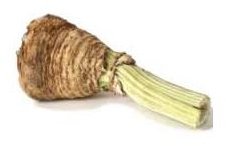Celeriac Nutritional Density: Nutrients and Health Benefits
Introduction
Celeriac is just another name for celery root. It is the root of the celery stalk. According to Produce Oasis, it should be selected when the root is firm and light brown in color. Avoid those that are soft and dark in appearance. The amount of nutrients a vegetable contains as compared to the number of calories it contains is referred to as its nutritional density. Celeriac nutritional density refers to the nutritional value of celeriac.
Nutrients
According to specialtyproduce.com, celeriac does not contain a wide variety of nutrients. Its content is mostly water. However, it does contain some nutrients, including vitamin C, calcium, and iron. It also contains a significant amount of fiber.
Health Benefits
Celeriac has a benefit, along with celery, of being a good diuretic. Although it is mostly water, the sodium it contains helps to flush the body of extra water. The high amount of potassium celeriac contains also helps, as a lot of potassium is usually lost when using diuretics. Celeriac also has the benefit of aiding in the digestive process due to the amount of fiber it contains. Fiber is well known for regulating the bowels and preventing constipation. Another major health benefit of celeriac may be due to the significant amount of vitamin C it contains. Vitamin C is an antioxidant, which means that it stops cells from oxidizing, or in simpler terms, stops the toxins in your body system from stealing all of your cells’ oxygen. Vitamin C is also a nutrient required for many vital body functions, such as brain function and blood vessel flow. A deficiency in vitamin C can lead to the disease known as scurvy, which can be fatal. Sufferers of scurvy endure the symptoms of bleeding and bruising easily, loss of hair and teeth, and joint pain and swelling.
Raw vs. Cooked
Celeriac is more healthy raw then cooked. Since celeriac can be enjoyed either way, it makes sense to eat it raw over cooked whenever possible in order to enjoy the most health benefits. Celeriac loses vitamin C, sodium, potassium, and proteins when cooked, and gains carbohydrates. Most vegetables lose some of their nutrients when cooked. There are, however, some tips that can help you to obtain the most nutrition from celeriac whenever cooking it is preferred. The nutrients in vegetables are leached into the water they are cooked in. This is inevitable when cooking vegetables. This water can be saved and, along with other previously saved cooking waters, can be used to create a nutrient rich soup. The cooking water from celeriac can also be used to cook other foods that absorb water such as pasta and rice to make them a little healthier. The saved water can be used in dishes that call for water as an ingredient to add a little extra flavor and nutrients.
Nutritional Density
Foods that are high in calories while low in nutrients are referred to as nutrient poor, while foods low in calories and high in nutrients are know as nutrient rich. Celeriac is a nutrient rich food, therefore celeriac nutritional density is high. It is very low in calories, and although it does not contain a large amount of nutrients, the nutrients it does contain far outweigh the number of calories it contains.
References
https://www.produceoasis.com/Items_folder/Vegetables/CeleryRoot.html
https://www.highbloodpressureinfo.org/benefit-of-celery.html
https://lpi.oregonstate.edu/infocenter/vitamins/vitaminC/
https://www.faqs.org/nutrition/Met-Obe/Nutrient-Density.html
Photo Credit
Image courtesy of https://commons.wikimedia.org/wiki/File:CDC_celery.jpg
